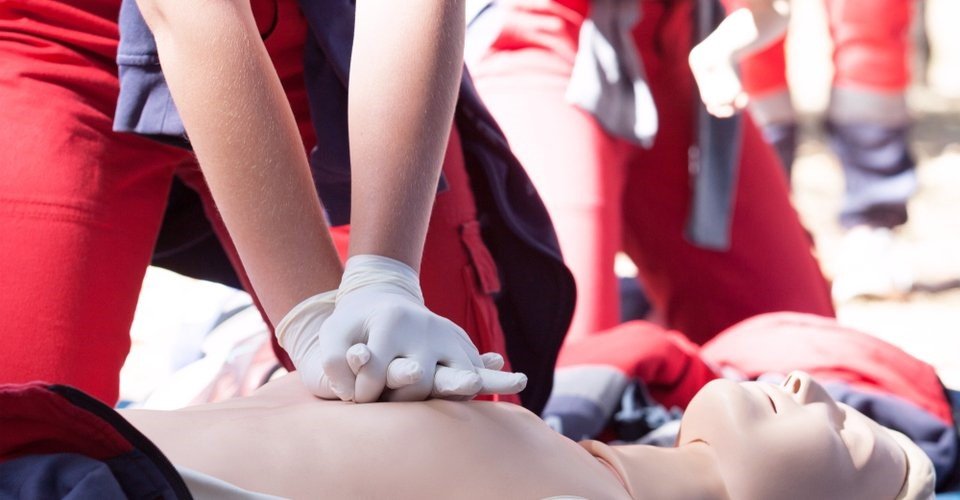Each year, more than 350,000 cardiac arrests occur outside of hospital settings in the United States, with survival rates largely dependent on the immediate administration of high-quality CPR. Despite its critical importance, studies show that even trained professionals make common errors during chest compressions that can significantly reduce survival chances. This guide addresses these mistakes and provides clear, actionable corrections to improve CPR effectiveness and patient outcomes.
Why Common Errors in Chest Compression Matter
When someone’s heart stops, every second counts. Blood circulation ceases immediately, depriving vital organs, especially the brain, of oxygen. High-quality chest compressions manually pump blood through the body, delivering crucial oxygen until the heart can be restarted. Unfortunately, research published in the Journal of Emergency Medicine indicates that even among healthcare providers, compression quality often falls below American Heart Association (AHA) standards.
The difference between properly performed chest compressions and those with errors can be life or death. A 2023 study in Resuscitation found that improving just two common compression errors increased survival rates by nearly 15%. Understanding and correcting these mistakes doesn’t just improve technique—it saves lives.
Common Errors in Chest Compression Position
Incorrect Hand Placement
One of the most frequent errors occurs before compressions even begin—improper hand placement. The AHA guidelines specify that compressions should be performed on the lower half of the sternum (breastbone), but many rescuers position their hands too high or too low.
The Error: Placing hands over the xiphoid process (the bottom tip of the sternum) or too high on the sternum near the clavicles.
The Correction: Position the heel of one hand in the center of the chest, directly between the nipples, with your other hand on top. This ensures compressions target the heart effectively without risking damage to surrounding structures like the liver or ribs.
A 2022 analysis of resuscitation attempts found that 31% of rescuers placed their hands incorrectly, highlighting the need for greater emphasis on proper positioning during training.
Body Alignment Issues
The Error: Standing too far from the victim or approaching from an angle rather than directly over the chest.
The Correction: Position yourself directly over the victim with your shoulders aligned above your hands and wrists. Your arms should be straight with elbows locked. This alignment allows you to use your body weight effectively, reducing fatigue while maintaining compression quality.
Common Errors in Chest Compression Depth
Insufficient Compression Depth
The Error: Not pressing deep enough during compressions. This is perhaps the most critical and widespread error in CPR.
The Correction: For adult victims, compress the chest at least 2-2.4 inches (5-6 cm). Visualize pushing down hard enough to compress the heart between the sternum and spine. Many rescuers fear causing injury and consequently don’t compress deeply enough, but remember: a broken rib is better than a lost life.
Research shows that compressions of less than 2 inches significantly reduce survival rates. In a 2021 multicenter study, only 44% of professional rescuers consistently achieved adequate depth throughout resuscitation efforts.
Excessive Compression Depth
While less common than shallow compressions, excessive depth carries its risks.
The Error: Compressing too deeply (beyond 2.4 inches in adults).
The Correction: Use feedback devices when available during training to develop muscle memory for proper depth. Focus on the sensation of resistance from the chest. Some newer automatic defibrillators include real-time feedback mechanisms that alert rescuers when compressions are too deep or too shallow.
Common Errors in Chest Compression Rate
Compression Speed Issues
The rhythm of compressions dramatically affects blood circulation efficiency.
The Error: Performing compressions too slowly (under 100/minute) or too quickly (over 120/minute).
The Correction: Aim for a rate of 100-120 compressions per minute—about the tempo of the Bee Gees’ song “Stayin’ Alive” or “Another One Bites the Dust” by Queen (though the latter might be less appropriate in the moment). Many CPR training programs now incorporate metronome apps or music to help rescuers maintain the proper pace.
A large-scale 2023 registry study found that compression rates outside the 100-120 range were associated with a 30% reduction in survival to hospital discharge.
Common Errors in Chest Compression Recoil
Incomplete Chest Recoil
The Error: Failing to allow the chest to fully return to its normal position between compressions, often by leaning on the chest or not lifting hands enough.
The Correction: After each compression, allow the chest to completely recoil without removing your hands from contact with the chest. This creates the negative pressure needed to refill the heart chambers with blood. Think of it as allowing a sponge to re-expand and absorb more water before squeezing it again.
The importance of complete recoil cannot be overstated—a 2022 animal study demonstrated that incomplete recoil reduced coronary perfusion pressure by up to 50%, dramatically decreasing the effectiveness of CPR.
Common Errors in Chest Compression Consistency
Interrupting Compressions
The Error: Taking too long to check for a pulse, administer breaths, or switch rescuers.
The Correction: Minimize all interruptions to less than 10 seconds. For professional rescuers performing two-person CPR, coordinate rescuer switches to occur during rhythm checks or defibrillation, not as separate interruptions. When switching, the incoming rescuer should be positioned and ready to resume compressions immediately.
Each 5-second unnecessary pause in compressions has been shown to decrease the likelihood of successful resuscitation by approximately 5%.
Compression Fatigue
The Error: Allowing quality to deteriorate as rescuer fatigue sets in.
The Correction: For lone rescuers, recognize that compression quality typically begins to decrease after about 2 minutes of continuous effort. When possible, switch rescuers every 2 minutes. If alone, focus on maintaining proper form even as fatigue sets in, and consider using a slightly wider stance to better leverage body weight.
Technology and Tools to Correct Common Errors in Chest Compression
Modern technology offers valuable solutions to help rescuers avoid and correct compression errors:
- CPR feedback devices: Tools like the CPR meter or PocketCPR provide real-time feedback on depth, rate, and recoil.
- Automated compression devices: Mechanical devices like LUCAS or AutoPulse can deliver consistent compressions without fatigue, though they should not delay manual CPR initiation.
- Smartphone apps: Several apps now provide metronome functions and timing guides to help maintain proper compression rates.
- Training mannequins with feedback: Many training centers now use mannequins that provide instant feedback on compression quality.
Training Implications for Preventing Common Errors in Chest Compression
Research consistently shows that CPR skills deteriorate within 3-6 months after training. To combat this rapid skill decay:
- Frequent refresher training: Quarterly brief practice sessions (even just 5-10 minutes) significantly improve skill retention.
- Simulation-based training: Realistic scenarios help providers prepare for the stress of actual emergencies.
- Deliberate practice: Focus specifically on correcting identified errors rather than general review.
- Team-based training: Practice communication and coordination for multiple-rescuer scenarios.
The Future of Chest Compression Quality Improvement
Emerging research is transforming how we address compression errors:
- Personalized CPR: Tailoring compression depth to individual victim characteristics using ultrasound assessment.
- Wearable technology: Smartwatches and fitness devices that can guide bystanders through proper CPR.
- Virtual reality training: VR simulations that create realistic emergency scenarios for more effective practice.
- AI-assisted CPR guidance: Camera-based systems that can analyze and provide feedback on compression technique in real-time.
Conclusion: Excellence in Chest Compressions Saves Lives
Correcting common errors in chest compression isn’t just a matter of technical perfection—it’s about maximizing survival chances for cardiac arrest victims. By understanding and addressing these common mistakes, both medical professionals and lay rescuers can dramatically improve outcomes.
Remember the key elements of high-quality compressions:
- Proper hand placement at the center of the chest
- Adequate depth (2-2.4 inches for adults)
- Appropriate rate (100-120 compressions per minute)
- Complete chest recoil between compressions
- Minimal interruptions
- Regular rescuer rotation to prevent fatigue
Take Action Today
Don’t wait for an emergency to test your skills. Proper training and regular practice are essential to correcting these common errors before they occur in real-life situations.
For healthcare professionals and community members in the Memphis area, CPR Memphis offers American Heart Association-certified BLS certification in Memphis and CPR certification in Memphis. Their stress-free, hands-on classes ensure you’ll master proper chest compression technique and avoid the common errors discussed in this article.
Contact CPR Memphis today to schedule your initial certification or renewal course. When cardiac arrest strikes, the life you save may depend on your ability to perform error-free chest compressions. Best CPR in Memphis is just a click or call away.





